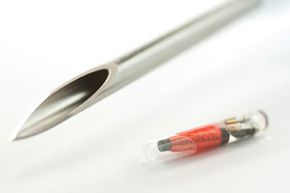It sounds like something straight from the plot of a sci-fi movie: By 2015, all Americans will be implanted with a microchip per order of Obamacare.
Truth be told, there is a chip program under Obamacare, but not the kind some may think. It's CHIP, the Children's Health Insurance Program -- it doesn't require any implanted microchips, but is there to provide insurance to low-income kids who fall into the grey area where they aren't eligible for Medicaid benefits but also come from families who can't afford the cost of private health insurance.
Advertisement
But CHIP was not the problem when the bill H.R. 3200, called America's Affordable Health Choices Act of 2009, was drafted. It was the idea of a national medical device registry, a database intended to monitor the medical devices used to save and improve our lives.
In H.R. 3200, in the middle of a lot of legislative writing about health care exchange systems and loan programs for health care workers is a section detailing that the Food and Drug Administration (FDA) establish a national medical device registry. It's this national medical device registry that has ignited the microchip myth. What is the registry for, and what devices are they registering? What are these implanted devices, and who has them? Myths continue to surround the legislation, but microchips? Well, when you refer to your desired database as the national medical device post-market surveillance system it's bound to happen that someone will misinterpret its purpose. H.R. 3200 is not the bill that was passed into law, though -- that was bill H.R. 3590, the Patient Protection and Affordable Care Act of 2010, colloquially known as Obamacare, and now public law 111-148. And there is no language in the public law stating -- or suggesting -- that all Americans will be implanted with microchips. There wasn't language like that in the earlier version of the bill, either.
In light of all this misunderstanding, let's talk about this medical device registry and what the purpose was supposed to be, for when the idea comes around again.
Advertisement


